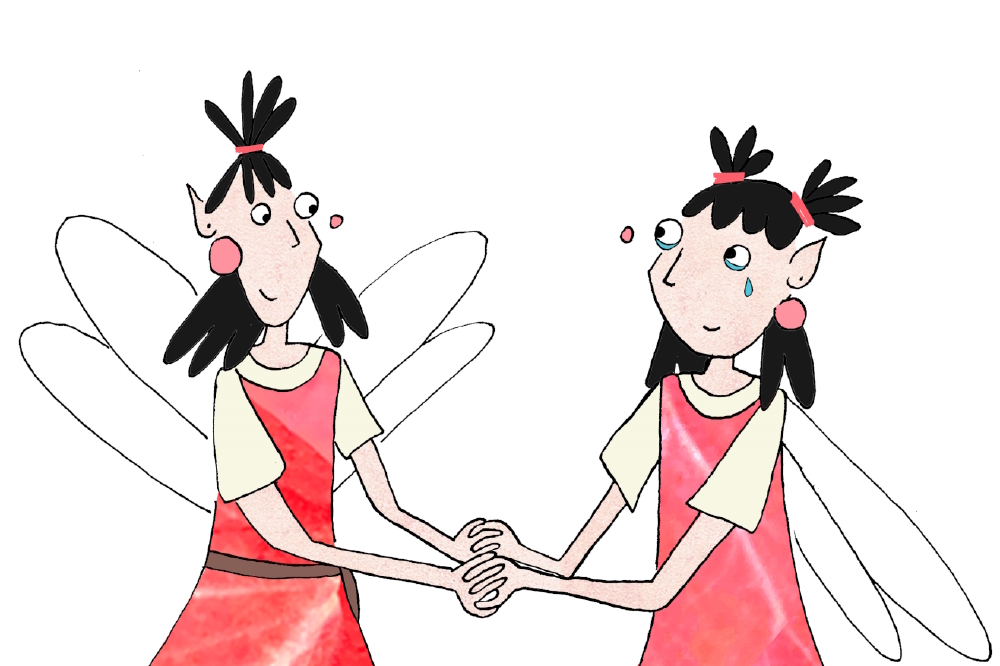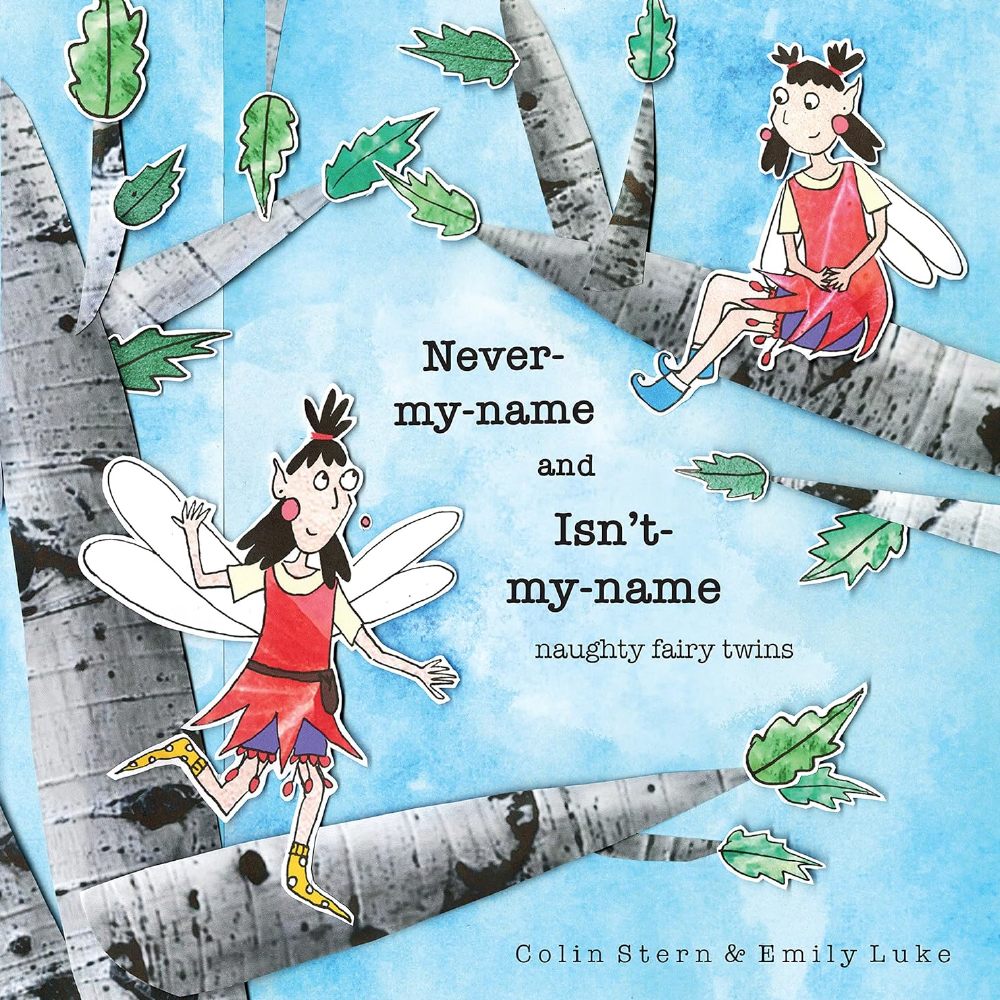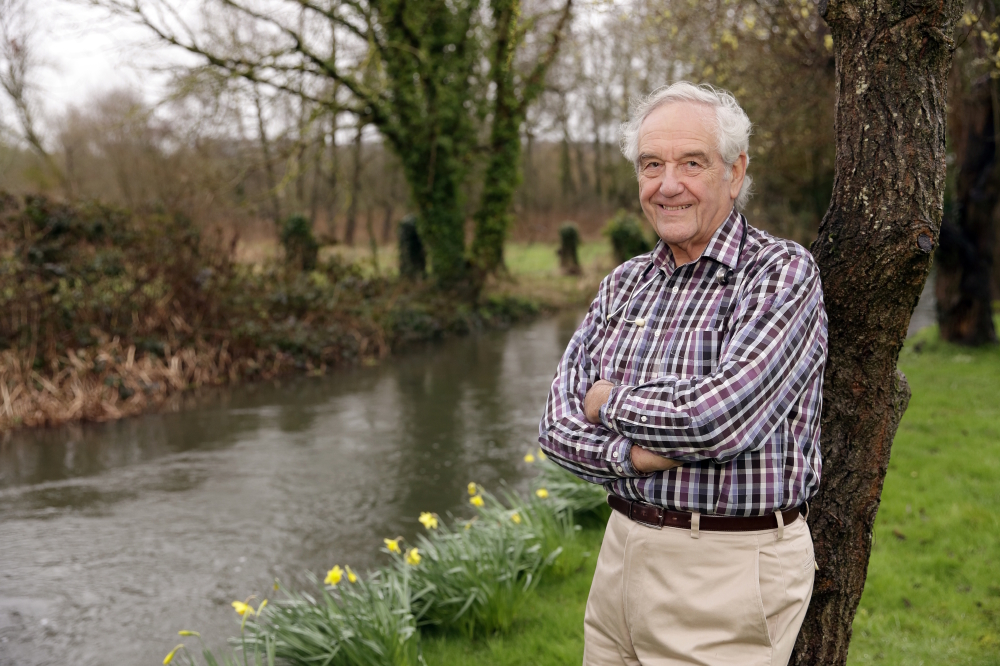Fairytale adventure Never-my-name and Isn’t-my-name by Colin Stern is a delight for young children, says Anne Cater.

Never-my-name and Isn’t-my-name
By Ann Cater
Colin Stern’s Never-my-name and Isn’t-my-name represents perhaps the best type of children’s story: one that was inspired by the bedtime stories that author told to his grandchildren when they were small.
As such, it comes fully ‘tried and tested’ to delight before it ever reaches the eager hands of your little ones.
Aimed at youngsters aged four to six years old, this is a literal fairytale adventure in that it tells of two naughty fairy twins, the titular Never-my-name and Isn’t-my-name.
The story kicks off when Isn’t-my-name goes missing. The twins were playing on the side of a mountain when, unbeknown to Never-my-name, Isn’t-my-name falls down a drain and out of sight.
As the book relates, “Never-my-name and Isn’t-my-name were naughty fairy twins. But Isn’t-my-name went missing, which is where my tale begins.”
The search begins but despite searching high and low, Never-my-name simply cannot find Isn’t-my-name and calls upon her fairy friends to help her to look.
Isn’t-my-name, however, is on an incredible journey, going deeper and deeper into the train until she emerges from the end of a dark, long tunnel.
Here, she meets an ancient green dragon sitting atop of a hoard of fabulous riches. Thankfully, the dragon – who want to call Isn’t-my-name the far less confusing ‘Jane’ – doesn’t want to eat her, simply requesting she conjure up a cup of tea.
The Dragon isn’t as frightening as it would appear, and after receiving its brew agrees to help her out of her predicament.
Using it’s fiery breathe, the dragon thrusts the little fairy through the roof and down the mountain.
Here, she is reunited with her twin sister who has been very upset at losing her. Both fairies, wisely, agree that they will keep away from the drain in future.
At just 32 pages, this magical tale is the ideal bedtime reading for any young child.
Beginning with the delightfully illustrated cover, through the colourful and eye-catching inside pages, illustrated by talented artist Emily Luke, this is a book to treasure.
The font is large, spread across double pages with varying sizes and styles. The illustrations, meanwhile, are unique and unusual with lots of details to pick out.
For instance, the artist includes black-and-white line drawings of the various little animals that live around the mountain, added to the wildly colourful backgrounds, while the dragon’s den is stuffed with bits and bobs to spots.
There’s an almost scrapbook feel to the jolly artwork, which will especially appeal to young children who can copy the effect by cutting pictures and sticking them onto their own backgrounds.

Whether you're a grown-up seeking solace in the written word or a parent whose children are embarking on a literary adventure, Never-my-Name and Isn’t-my-Name by Colin Stern offers something truly special.
The story, told in simple but catchy rhyming verse, is no less charming, and will be sure to amuse and entertain, making this a book ideal to enjoy as a family.
And because it is a short tale – in large format, perfect for small hands to handle – it makes a great early-reader for kids just starting their own reading adventure.
Author Colin Stern is no stranger to making children smile, having helped thousands feel better during a distinguished four-decade career as a paediatrician.
Since his retirement nearly 20 years ago, he has reinvented himself as an author of great versatility, delivering both prose and poetry, fiction and non-fiction, for readers young and not so young.
The story behind the release of Never-my-name and Isn’t-my-name is just as intriguing as the tale. Colin, who has written over 400 poems and counting, was asked by his youngest granddaughter to create a poem with a dragon in it, and here we are.
He uses rhyme and words so beautifully, it doesn’t feel forced and the characters’ voices are almost musical, with the sing-song effect of the bite-sized verse.
Within the story, there’s a good message to be taken away: never judge a dragon on face value! We can apply that to everyone we meet, as despite its fiery breath, the dragon is kind and very helpful.
There’s also a warning to youngsters, they shouldn’t go into strange and unknown places, for fear of just what they may find!
Colin Stern and illustrator Emily make a perfect pairing and with further children’s books in the works, they are a duo every parent should keep an eye on.
Never-my-name and Isn’t-my-name by Colin Stern (Brown Dog Books) is available on Amazon, priced £8.99 in paperback. Visit www.ColinStern.co.uk
Q&A Interview With Author Colin Stern
Retired paediatrician turned author Colin Stern shares more insights into his children’s fairytale adventure Never-my-name and Isn’t-my-name, and why writing for children is second nature to him.

Q. What inspired you to write a fairy story for children, and why did you choose this particular theme or setting?
A. I imagine partly it’s because of working with children for so long that I find I write about a third of my poems for children. This one, Never-my-name and Isn’t-my-name, was written in response to a request from one of my grandchildren, Jemima, for a poem with a dragon in it. I have no real clue why it came out as it did. I think it would be accurate to say that I just followed wherever the poem led.
Q. Can you describe the creative process behind the development of your characters, especially the twins in your fairy tale?
A. Quite often, I will start a poem and not have any idea where it’s going. In this particular one, I had to include a dragon, as requested. Why I chose twin fairies to centre the story on, I really can’t say. One of them is the more adventurous of the two and more likely to stand up to the dragon. I think I decided to set the tale on a mountain because dragons traditionally live inside them. After that, the story simply flowed.
Q. How did you approach the creative balance between writing and illustrating the book?
A. That was difficult. All children’s tales should be illustrated and it took me a long time to come across Emily Luke. How lucky I was to do so! Although the poem came first, the illustrations are as important and are, I think outstanding.
Q. Fairy tales often carry moral or ethical messages. What messages or themes were you hoping to convey to young readers through your story?
A. That’s easy. Stand up for yourself!
Q. How do you think your fairy tale contributes to the larger landscape of children's literature? What sets it apart from other stories in the genre?
A. I think it fit well into the genre occupied by writers such as Julia Donaldson. While the poem is OK, it’s the illustrations that set it apart, I think.
Q. Could you share any specific challenges you encountered while writing your fairy tale, and how you overcame them?
A. It was easy, actually. I have never found it hard to write stories in verse. The first draft only took me about 30 minutes, though I made a few revisions later.
Q. What do you hope children will take away from your story? How do you envision it impacting their imaginations and understanding of the world?
A. It’s meant to be entertaining and to help with the development of language in young children. Verse is a very good way in which to develop language.
Q. What can young readers and their parents expect from you next?
A. Ah, there are three more books in the pipeline. Ione is almost ready to publish and will be called The Disappearing Dodo and Other Awful Avians. Then there is a collection of about 60 children’s verses, to be called A Children’s Charivari. The third book is a children’s saga called The Rainbow Mace. That’s complete but needs a bit more work, specifically in terms of the illustrations.

